Seismic Response Analysis of Rock-Socketed Piles in Karst Areas under Vertical Loads
Abstract
:1. Introduction
2. Finite Element Model of the Rock-Socketed Pile and Seismic Input
2.1. Finite Element Model
2.2. Seismic Input
3. Seismic Response Analysis of the Rock-Socketed Pile under the Influence of a Single-Karst Cave
3.1. Analysis of the Rock-Socketed with Different Heights of the Karst Cave
3.2. Analysis of the Rock-Socketed with Different Heights of the Karst Cave Roof
4. Seismic Responses Analysis of the Rock-Socketed Pile under the Influence of Multiple Karst Caves
4.1. Analysis of the Rock-Socketed under the Conditions of Beaded Karst Caves
4.2. Analysis of the Rock-Socket under the Conditions of the Beaded Karst Cave and Underlying Karst Cave
5. Conclusions
- (1)
- The existence of karst caves in bedrock would significantly affect the strain of the rock-socketed pile. The pile strain at the corresponding position in the karst cave was relatively large. With the increase of the karst cave height and the decrease of the karst cave roof, the restraint effect of the bedrock near the pile gradually decreased and the peak strain of the rock-socketed pile gradually increased.
- (2)
- The peak strain of the pile would gradually increase with the increase of the number of beaded karst caves under the condition of beaded karst caves. Moreover, due to the restraint of bedrock between karst caves, the pile presented the distribution characteristics of “multi-segment and multi-polyline”.
- (3)
- In the condition of the underlying karst cave, the existence of the underlying karst cave reduced the restraint effect of the bedrock at the bottom, and made the peak strain of the pile increase to a certain extent. With the increase of the distance coefficients (DC), the influence also decreased. When the DC exceeded 2, the existence of the underlying karst cave had little effect on the pile strain.
- (4)
- Due to the same viscous sand layer above 80 m, the peak strain distribution of the pile above 80 m buried depth was almost the same under all conditions. The soil properties would have a great influence on the response of the pile.
- (5)
- According to the seismic response of rock-socketed pile, the pile strain at the location of karst cave was considerable; the mentioned dangerous location of the pile should be appropriately reinforced or reinforced with steel hoops. Under the conditions with pile-through and underlying karst cave, the existence of a karst cave reduced the restraint effect of the bedrock at the bottom; it is necessary to strengthen the bedrock between the pile foundation and the karst cave by grouting.
Author Contributions
Funding
Data Availability Statement
Acknowledgments
Conflicts of Interest
References
- Yang, S.S.; He, S.; Xie, K.Z.; Li, J. Seismic Damage Analysis and seismic resistance research progress of architectural structures in karst area of China. Seism. Res. 2013, 36, 401–406. [Google Scholar]
- Zhang, J. Study on Bearing Mechanism and Stability Evaluation of Pile Foundation in Hidden Karst Cave Area with Inclined Roof. Ph.D. Thesis, Shandong University, Jinan, China, 2019. [Google Scholar]
- Feng, M.W. Bearing Mechanism and Experimental Study of Bridge Pile Foundation in Karst Area. Ph.D. Thesis, Hunan University, Changsha, China, 2014. [Google Scholar]
- Zhang, Y.J.; Deng, J.Q.; Yang, X.S.; Zhao, M.H.; Wang, G.Y. Stability analysis method of karst pile foundation considering spatial shape of karst cave. Chin. J. Highw. 2019, 32, 37–45. [Google Scholar]
- Zeng, W.M. Pseudo-Static Test and Seismic Performance of Slope Rock-Socketed Single Pile with Vertical Load. Master’s Thesis, Chongqing University, Chongqing, China, 2021. [Google Scholar]
- Rajeswari, J.S.; Sarkar, R. Seismic behavior of batter pile groups embedded in liquefiable soil. Earthq. Eng. Eng. Vibration 2021, 20, 583–604. [Google Scholar] [CrossRef]
- Phung, M.V.; Nguyen, D.T.; Doan, L.T.; Nguyen, D.V.; Duong, T.V. Numerical investigation on static bending and free vibration responses of two-layer variable thickness plates with shear connectors. Iran. J. Sci. Technol. Trans. Mech. Eng. 2022, 46, 1047–1065. [Google Scholar] [CrossRef]
- Phung, M.V.; Tam, T.D.; Ke, T.V. Static bending analysis of symmetrical three-layer FGM beam with shear connectors under static load. J. Sci. Tech. 2020, 15, 68–78. [Google Scholar] [CrossRef]
- Dung, N.T.; Minh, P.V.; Hung, H.M.; Tien, D.M. The Third-Order Shear Deformation Theory for Modeling the Static Bending and Dynamic Responses of Piezoelectric Bidirectional Functionally Graded Plates. Adv. Mater. Sci. Eng. 2021, 2021, 5520240. [Google Scholar] [CrossRef]
- Xu, C.S.; Gao, Y.C.; Chen, S.; Du, X.L.; Dou, P.F. Shaking table test design of liquefaction site pile foundation considering ground motion duration. Earthq. Eng. Eng. Vib. 2017, 37, 51–57. [Google Scholar]
- Zhang, R. Numerical simulation of dynamic response of rock-socketed pile foundation under horizontal seismic load. East China Highw. 2016, 3, 29–30. [Google Scholar]
- Abuhajar, O.; Naggar, H.E.; Newson, T. Experimental and numerical investigations of the effect of buried box culverts on earthquake excitation. Soil Dyn. Earthq. Eng. 2015, 79, 130–148. [Google Scholar] [CrossRef]
- ABAQUS. 6.14 Document; ABAQUS. Inc.: Palo Alto, CA, USA, 2014. [Google Scholar]
- Guo, J.; Chen, J.Y.; Bobet, A. Influence of a subway station on the inter-story drift ratio of adjacent surface structures. Tunn. Undergr. Space Technol. 2013, 35, 8–19. [Google Scholar] [CrossRef]
- Huang, J.Q.; Du, X.L.; Jin, L.; Zhao, M. Impact of incident angles of P waves on the dynamic responses of long lined tunnel. Earthq. Eng. Struct. Dyn. 2016, 45, 2435–2454. [Google Scholar] [CrossRef]
- Liao, Z.P.; Liu, J.B. Elastic wave motion in discrete grids. Earthq. Eng. Eng. Vib. 1986, 6, 1–16. [Google Scholar]
- Du, X.L.; Zhao, M. Analysis method for seismic response of arch dams in time domain based on viscous-spring artificial boundary condition. J. Hydraul. Eng. 2006, 37, 1063–1069. [Google Scholar]
- Qiu, D.P.; Chen, J.Y.; Xu, Q. Comparative numerical analysis on dynamic effects of underground large scale frame structures under seismic waves. Tunn. Undergr. Space Technol. 2019, 83, 35–50. [Google Scholar] [CrossRef]
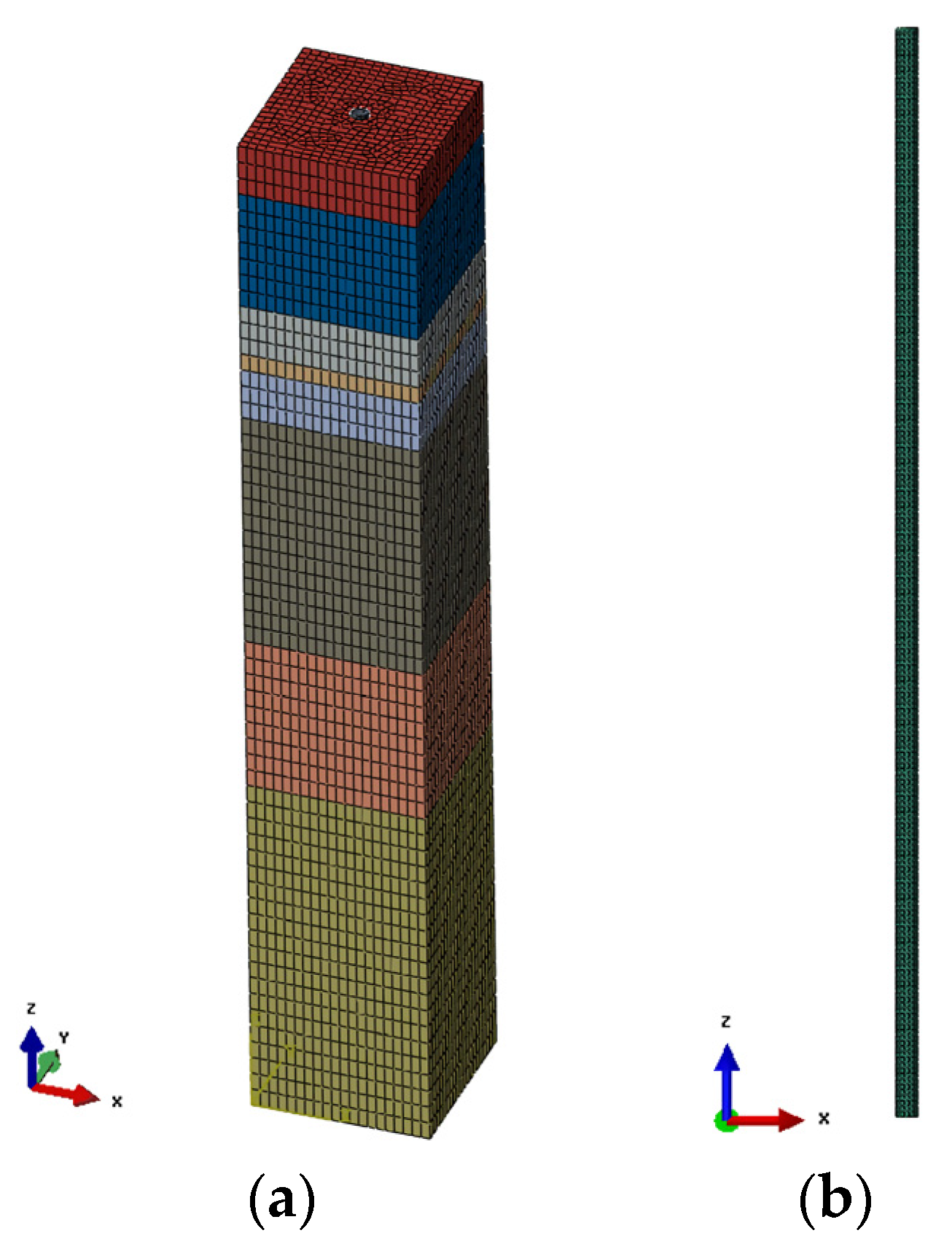

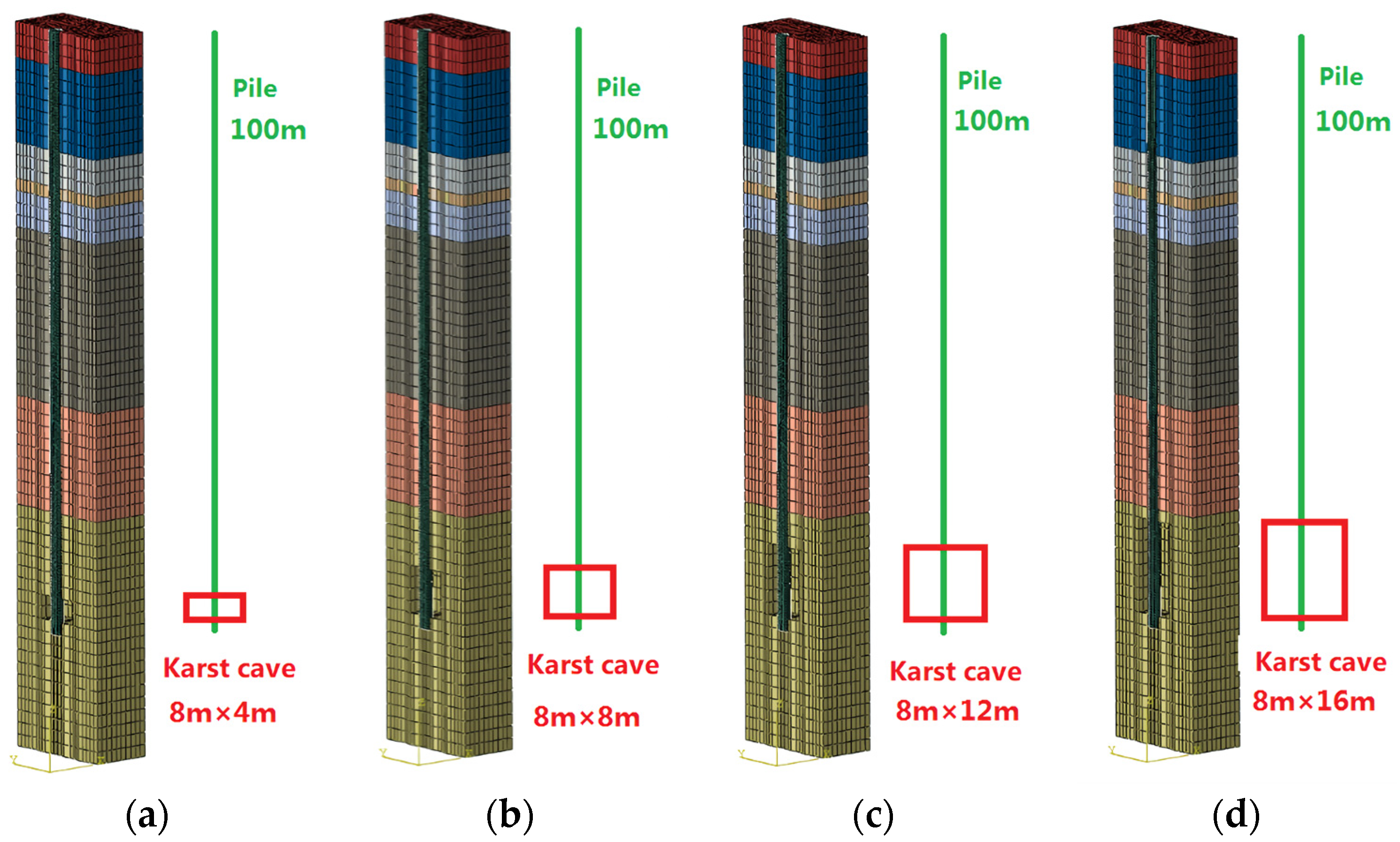
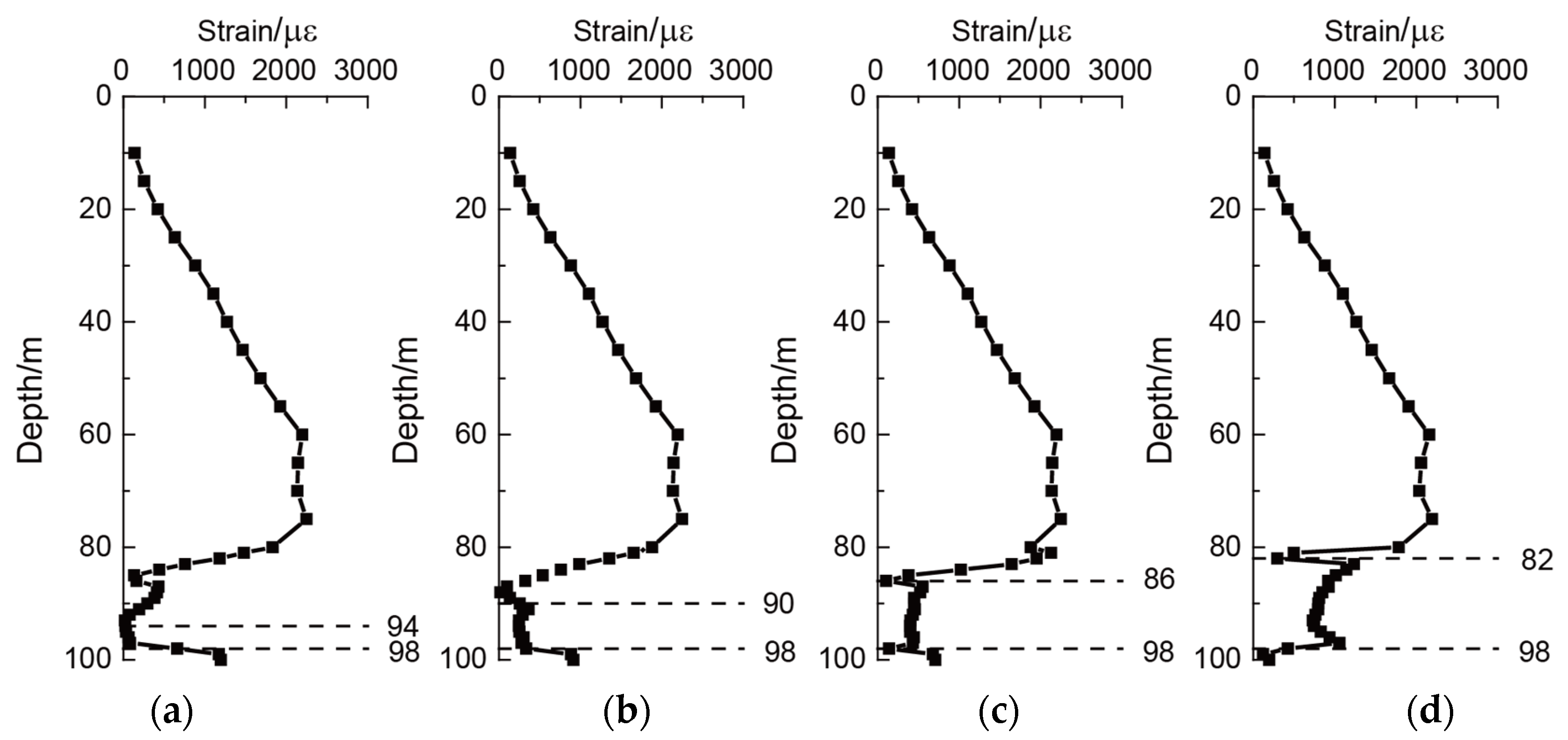

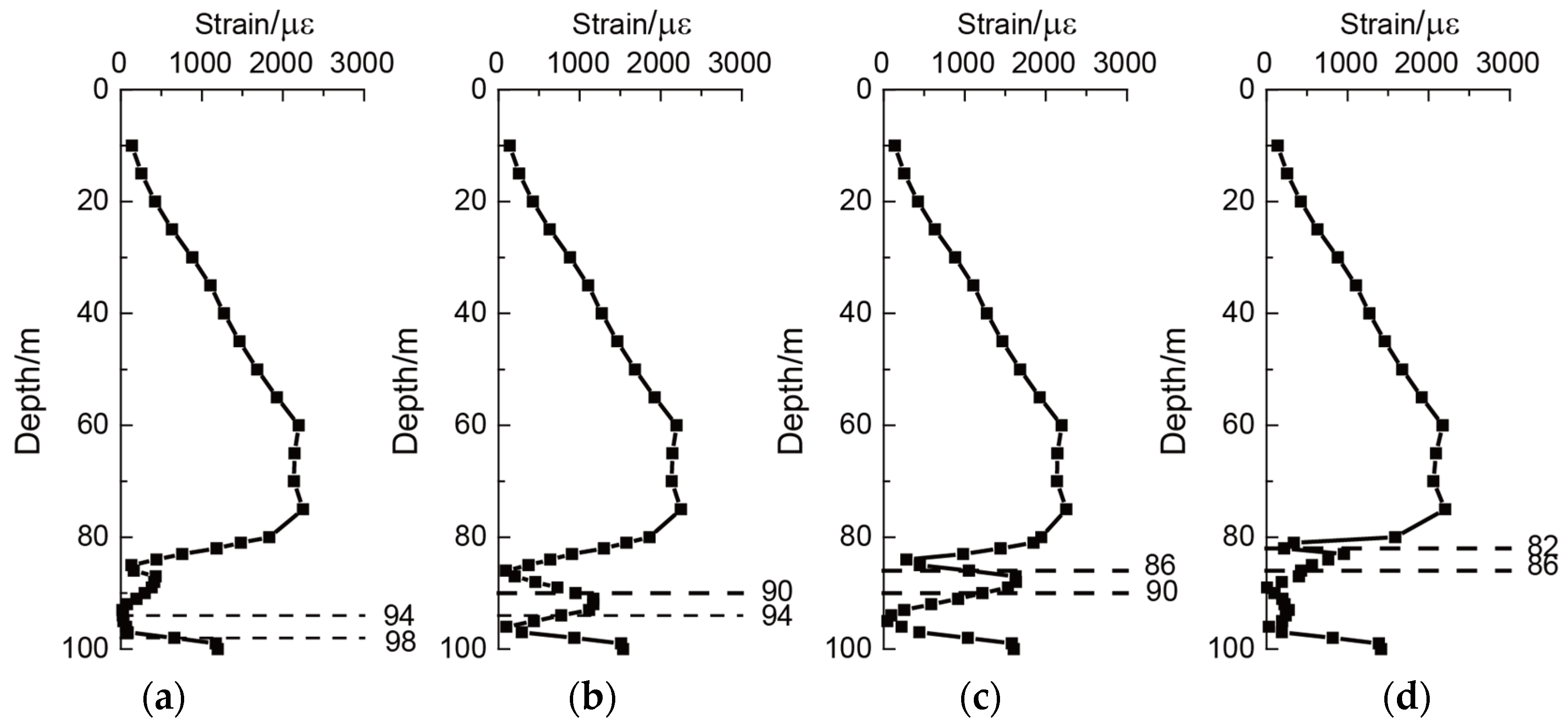
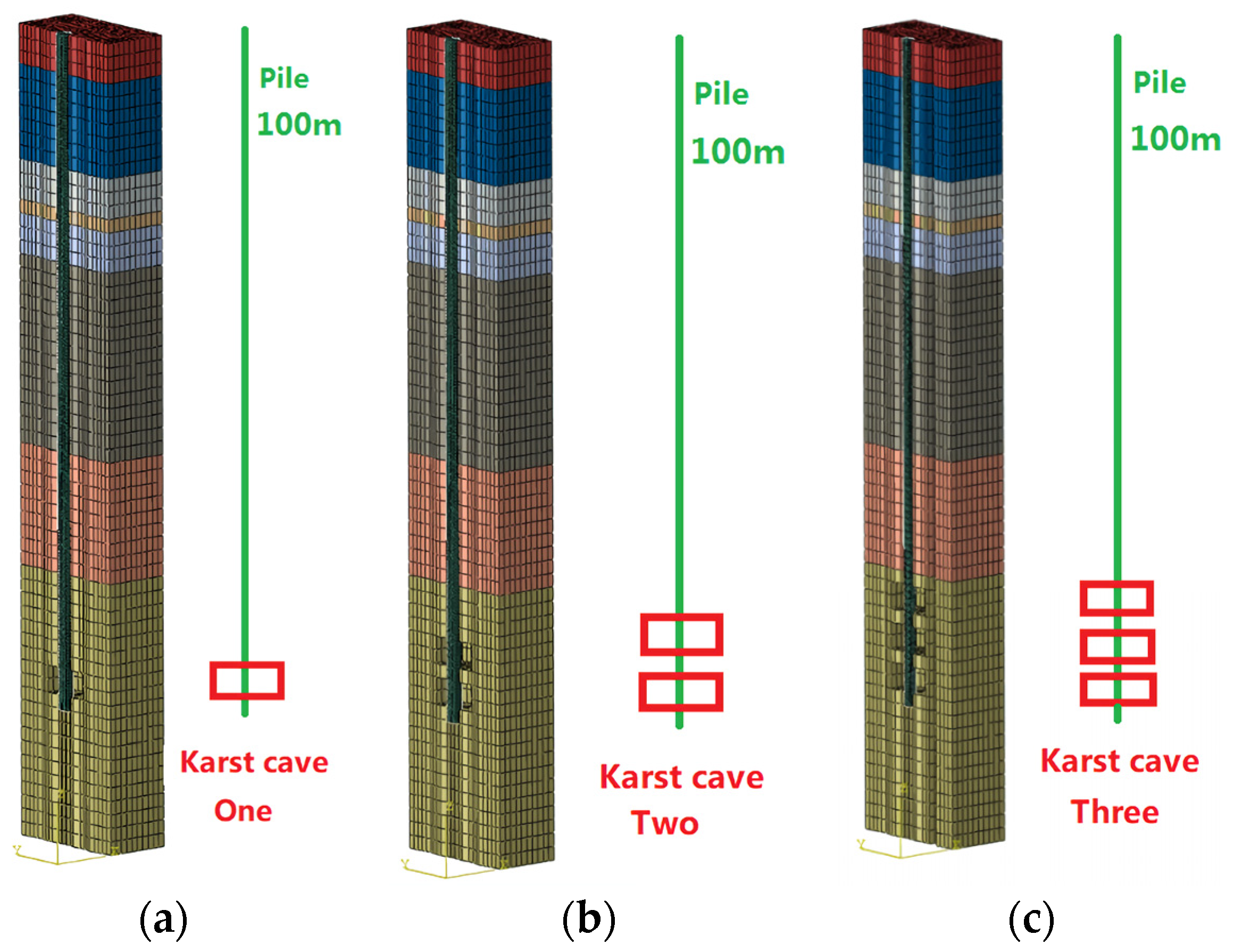

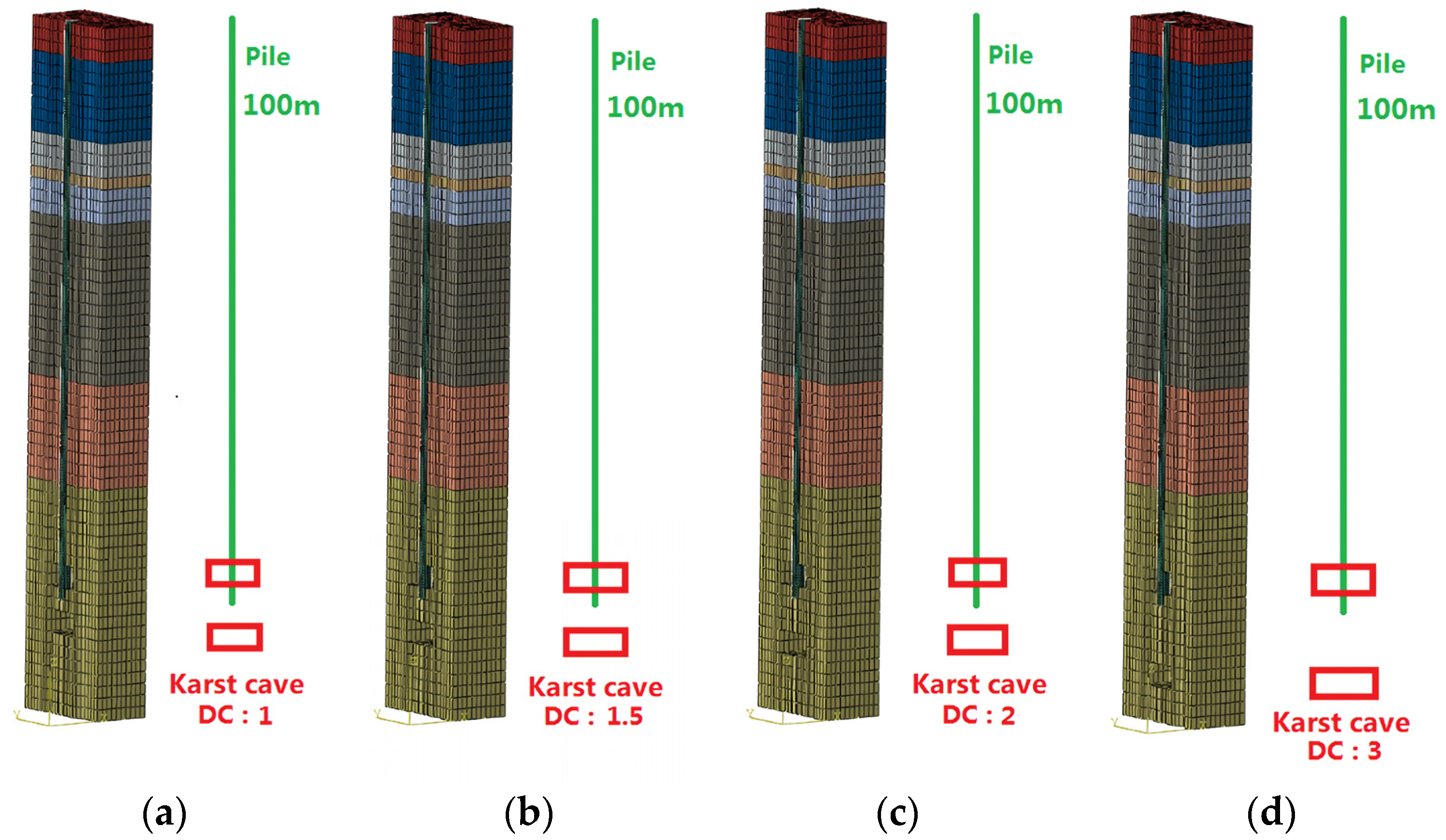
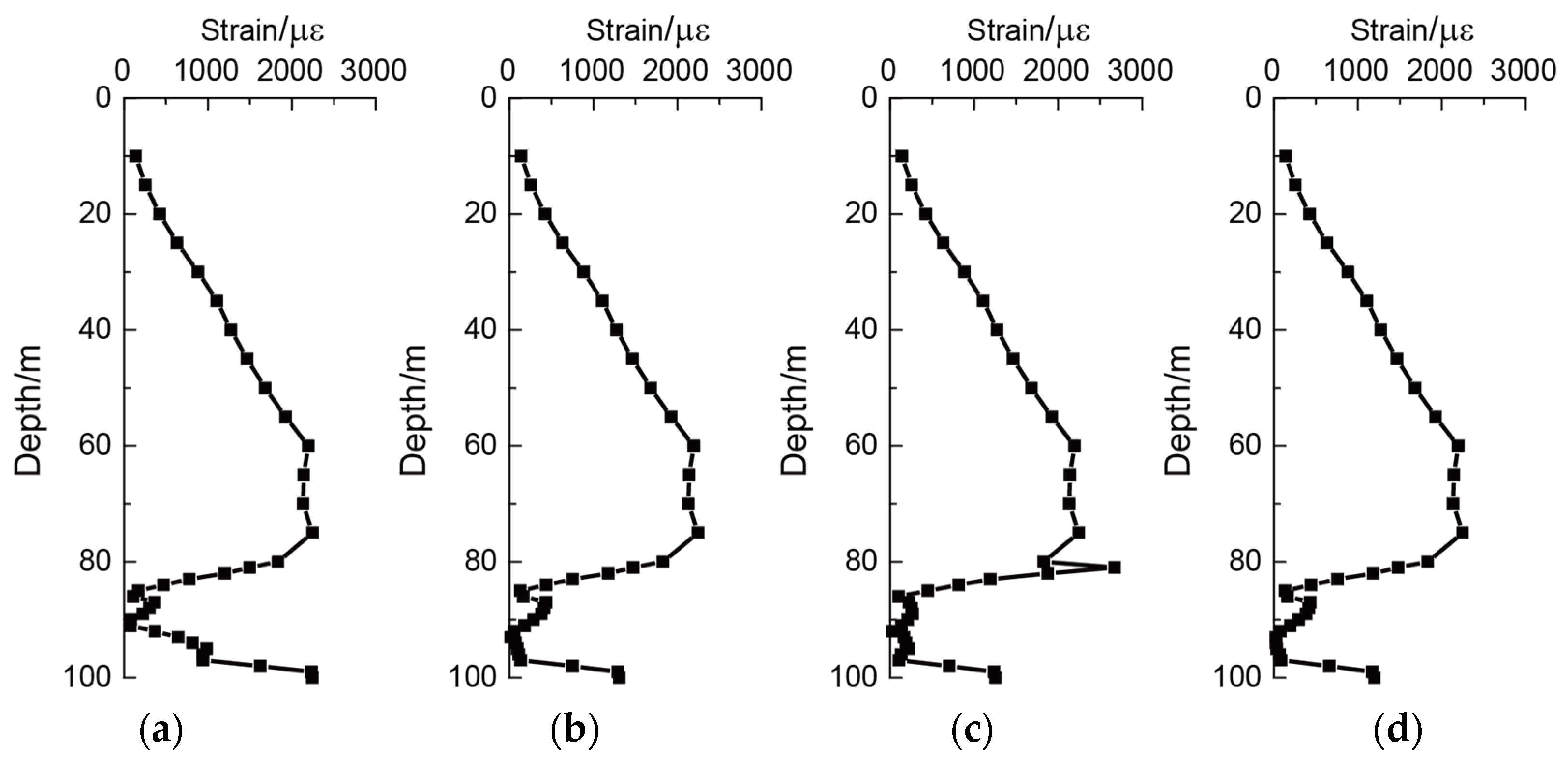
| Symbols | Symbols | Symbols | |||
|---|---|---|---|---|---|
| Cohesion | Third stress invariant | Correction coefficients of the spring in the normal direction | |||
| Friction angle | Mises equivalent stress | Correction coefficients of the spring in the tangent direction | |||
| First principal stress | Polar angle | Shear modulus of the medium | |||
| Third principal stress | Coefficients of spring in the normal direction | Density of the medium | |||
| Shear stress | Coefficients of damper in the normal direction | Distance | |||
| Coefficients of spring in the tangent direction | Propagation velocities of compression wave | ||||
| Coefficients of spring in the tangent direction | Propagation velocities of shear wave |
| Layer | Density (kg/m3) | Elastic Modulus (MPa) | Friction Angle (°) | Cohesion (kPa) | Thickness (m) |
|---|---|---|---|---|---|
| Layer-1 | 1950 | 7.39 | 10.4 | 30 | 6 |
| Layer-2 | 1850 | 5.60 | 8.4 | 29 | 14 |
| Layer-3 | 1920 | 5.68 | 9.6 | 36 | 6 |
| Layer-4 | 2000 | 4.64 | 12.3 | 15 | 2 |
| Layer-5 | 1870 | 4.61 | 14.0 | 43 | 6 |
| Layer-6 | 1920 | 7.27 | 29.5 | 43 | 28 |
| Layer-7 | 1930 | 7.79 | 28.8 | 32 | 18 |
| Bedrock | 2680 | 14,000 | 44.5 | 1 | 40 |
| Pile | 2400 | 30,000 |
Disclaimer/Publisher’s Note: The statements, opinions and data contained in all publications are solely those of the individual author(s) and contributor(s) and not of MDPI and/or the editor(s). MDPI and/or the editor(s) disclaim responsibility for any injury to people or property resulting from any ideas, methods, instructions or products referred to in the content. |
© 2023 by the authors. Licensee MDPI, Basel, Switzerland. This article is an open access article distributed under the terms and conditions of the Creative Commons Attribution (CC BY) license (https://creativecommons.org/licenses/by/4.0/).
Share and Cite
Wang, P.; Zhang, P.; Hu, W.; Qiu, D. Seismic Response Analysis of Rock-Socketed Piles in Karst Areas under Vertical Loads. Appl. Sci. 2023, 13, 784. https://doi.org/10.3390/app13020784
Wang P, Zhang P, Hu W, Qiu D. Seismic Response Analysis of Rock-Socketed Piles in Karst Areas under Vertical Loads. Applied Sciences. 2023; 13(2):784. https://doi.org/10.3390/app13020784
Chicago/Turabian StyleWang, Peisen, Puyang Zhang, Wenjun Hu, and Dapeng Qiu. 2023. "Seismic Response Analysis of Rock-Socketed Piles in Karst Areas under Vertical Loads" Applied Sciences 13, no. 2: 784. https://doi.org/10.3390/app13020784





